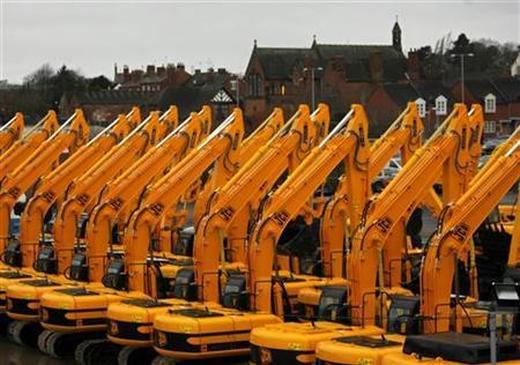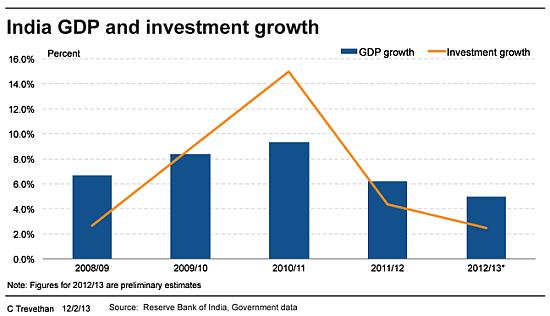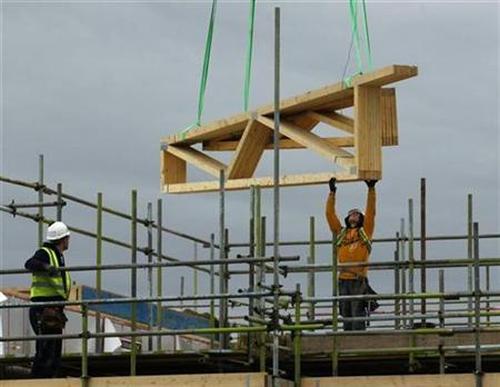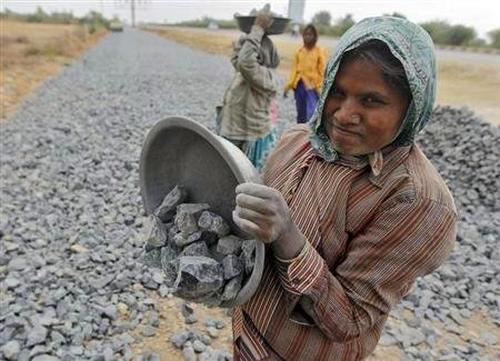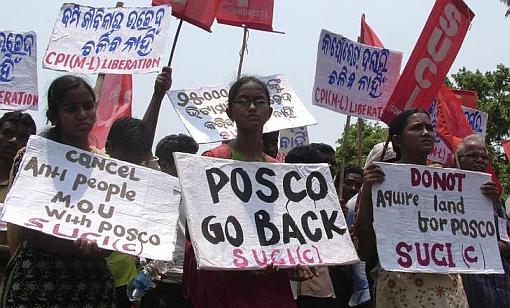 | « Back to article | Print this article |
Reforms: Business sentiments improved but nothing else changed
Being a big wheel in the earth mover business, Vipin Sondhi has a very clear idea why the Indian economy is stuck in the mud and what the government must do to change the mindset of business executives, like himself, who are too wary to invest.
The chief executive officer and managing director of JCB India, the country's largest construction equipment manufacturer, says Prime Minister Manmohan Singh has improved business sentiment with the launch of urgently needed reforms last September.
But that, he says, won't justify fresh investment when his firm, a fully-owned subsidiary of UK-based JC Bamford Excavators Ltd, is already running 20 to 25 percent below capacity that was doubled just over three years ago.
"Has there been a turnaround in construction demand? The answer is no," Sondhi told Reuters at JCB's headquarters at Ballabgarh in Haryana. "The sentiment is changing, but the situation on the ground has not changed."
Sales of JCB's tractor-mounted diggers, loaders and other machines hit a record 27,000 units in 2011, but after last year's sharp slowdown the firm is working on the basis that there will be no sales growth at all in the first half of 2013.
Click NEXT to read more...
Complete coverage: Union Budget 2013-14
Budget Impact Live!
Reforms: Business sentiments improved but nothing else changed
The latest macroeconomic data provides scant evidence of anything changing fast for the better, with India on course to end the 2012/13 fiscal year in March with its slowest growth in a decade at 5 percent.
Industrial output data released on Tuesday added to the gloom.
India's industrial production unexpectedly shrank for a second straight month in December, weighed down by weak investment and consumer demand, casting doubt on Finance Minister P. Chidambaram's view that Asia's-third largest economy is showing signs of recovery.
The index of industrial production (IIP) fell 0.6 percent annually in December, following a revised 0.8 percent drop in November. Output has grown in just three of the last nine months.
The output data follows even more chastening preliminary gross domestic product (GDP) estimates released last Thursday that showed annual growth would probably cool to 4.6 percent in the six months through March, down from 5.4 percent in the first half of the fiscal year.
The slowdown has left India a long way off the near double-digit growth it had hoped would become routine, given the need to raise the living standards of hundreds of millions of poor among its 1.2 billion people.
Click NEXT to read more...
Complete coverage: Union Budget 2013-14
Budget Impact Live!
Reforms: Business sentiments improved but nothing else changed
Infrastructure firms like Bharat Heavy Electricals Ltd., Larsen & Toubro and Hindustan Construction reported dismal sales during the October-December quarter, and their order books showed little hope for a quick turnaround.
All Geared Up, No Place To Go
Weak investment, now projected to hit at least a five-year low, lies at the heart of India's economic malaise, with some firms saddled with spare capacity built up in the expectation that the boom years of the early 2000s had further to run.
"We can recapture the magic of 2004-08. The average growth was 8.5 per cent during that period," Chidambaram said on Saturday.
"Why should we, without any reason, denigrate our own performance and record? I have no doubt in my mind that we will come out of the trough and we will climb back to a growth rate of between 6-7 percent next year," he said.
After being pilloried for inaction as the economy faltered in the past two years, the Congress-led government has launched a slew of economic initiatives since September last year that have helped lower the risk of a downgrade in its sovereign debt rating to junk bond status.
Click NEXT to read more...
Complete coverage: Union Budget 2013-14
Budget Impact Live!
Reforms: Business sentiments improved but nothing else changed
It has opened retail and aviation sectors to more overseas investment, hiked rail passenger fares, cut fuel subsidies and delayed tax changes that threatened to deter capital inflows.
But at the same time the government is having to cut spending to trim a worryingly high fiscal deficit.
The budget for road building is one item that will be slashed, not that many were being built.
Earlier this month, a road ministry official told Reuters that the ministry had awarded just 1,000 km of road projects, out of a target of 9,000 km for the current fiscal year.
The most positive development for the infrastructure sector, according to JCB's Sondhi, has been the formation of the cabinet committee on investment (CCI).
Meant to help major projects get the approvals they need from various ministries, the panel met for the first time last month, without making any big decisions. But Sondhi was optimistic that Singh's government, after nearly nine years in power, will straighten out priorities.
Red tape, public interest litigation and a lack of power generating capacity are nothing new in India.
Click NEXT to read more...
Complete coverage: Union Budget 2013-14
Budget Impact Live!
Reforms: Business sentiments improved but nothing else changed
What has been missing is the political will to force change needed to allow projects to move ahead.
South Korean steelmaker Posco has a $12 billion project in Odishastill waiting to get off the ground. Posco has been struggling to acquire land since 2005.
For the past seven years Luxembourg-based ArcelorMittal's $30 billion steel projects have been waiting for forest department approvals.
"The cabinet committee on investment has to get going," Sondhi said. "Issues related to land acquisition, forest and environmental clearances need to be ironed out. And they have to be ironed out at the level of the CCI."
Notably, Sondhi didn't mention India's high interest rates as he ran down a list of disincentives to investment in his sector.
"If the government manages to address the bottlenecks, the change could come in the next two quarters," he added. "By doing nothing, nothing will change."
Complete coverage: Union Budget 2013-14
Budget Impact Live!

© Copyright 2025 Reuters Limited. All rights reserved. Republication or redistribution of Reuters content, including by framing or similar means, is expressly prohibited without the prior written consent of Reuters. Reuters shall not be liable for any errors or delays in the content, or for any actions taken in reliance thereon.
